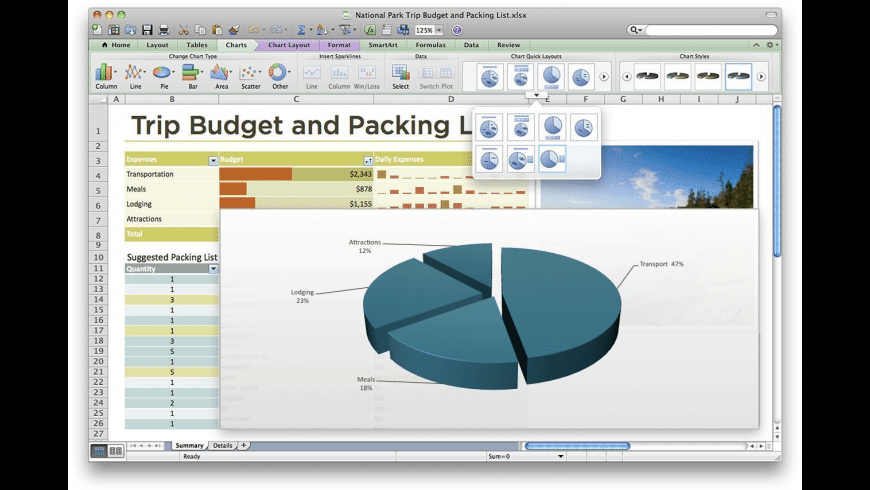

- #Office 2011 update 14.7.7 for mac
- #Office 2011 update 14.7.7 mac os x
- #Office 2011 update 14.7.7 install
- #Office 2011 update 14.7.7 software
- #Office 2011 update 14.7.7 mac
…that should give you a list of all files on your Mac with that file-extension – then in the search field top right, type “.xlsx” or “.xlsb” or “.xlb” and press ENTER (and you might even want to set an extra filtering line “Last modified date” “is within last 1 day(s)”) – on the next filtering line, change “Kind” to “System files” and set it to “are included” – then click the “+”-button on the right side – then click “Kind” (or whatever is indicated on the button that used to say “Kind”) and adjust it to “File visibility” and set the button behind it to “Visible or invisible” – in the window that appears, make sure there are check marks at “File visibility”, “System files” and “Last modified date” – then click the “Kind” button, and select “Other…” – in the search window that appears, at “Search:” select “This Mac” ‘when you can see your Desktop’) press the CMD + F key combo on your keyboard To search for files within ALL files on your Mac, do this : [ a big Thank You to Paul Preston for noticing this problem and for Bryan P for posting the solution on Williams : xlb (older Excel backup format), to enable Excel to recognize the file and enable it to open. The solution is to change the file extension to either. xlsx file ! trying to open it will lead to an “Microsoft cannot open this file”-error.
#Office 2011 update 14.7.7 for mac
It turns out that there’s a bug in Excel 2011 for Mac : even though the Autosave does save a file with an. Note : It is not clear if this problem is due to OSX 10.9 “Mavericks” or that it is occurring with all installations of Office 2011 for Mac. Either way, the solution is as mentioned above. – there you can navigate to Application Support–>Microsoft–>Office to find the “Office 2011 AutoRecovery”-folder you are looking for – while holding the ALT-key, click on “Library” and your personal (hidden) Library-folder will open in the Finder OPTION-key) and an extra option named “Library” will appear in the pulldown menu – when the pulldown menu appears, press the ALT-key on your keyboard (a.k.a. – in the Finder, click on “Go” in the top menu bar

So if you want to access it, the easiest way to do so is : ~/Users/ username/Library/Application Support/Microsoft/Office/Office 2011 AutoRecoveryīut there is yet another tiny hurdle to get to it : in the current version of OSX, the user’s Library-folder is a hidden folder. Nowadays, the AutoRecovery-folder is located in an entirely different location on your Mac. You might have guessed : there’s a fault in the Office 2011 Help file.

I checked in the Office 2011 Preferences to make sure Auto-saving is switched on, and it is… so where did the folder go ? where are my auto-save documents ? ~/Users/ username/Documents/Microsoft User Data/Office 2011 AutoRecoveryīut when I open that folder I have a “Office 2004 AutoRecovery” and a “Office 2008 AutoRecovery”-folder, but there’s no such folder for Office 2011… It told me I would be able to find the folder via this path : I forgot where to find the AutoRecovery-folder, so I used Office 2011’s build-in Help-option to get a hint. I accidentally messed up the Office documents (Word/PowerPoint/Excel) I was working on, and I didn’t save it before, so I wanted to get the auto-saved version from the AutoRecovery-folder as I’ve done before in Office 20. Microsoft has confirmed that this is a problem in the Microsoft products that are listed in the "Applies to" section.UPDATE : the updated version of this post for Office 2016 / Office 365 (Word 15 / PowerPoint 15 / Excel 15) can be found here :įixed : where are my Office 365 AutoRecovery files ? Update replacement informationThis update replaces security update 3051737. Removing the updateThis security update cannot be uninstalled. Restart requirementThis update does not require you to restart your computer. The number should be 14.1.0 or a later version. In the About dialog box, note the version number that is displayed. Open the Microsoft Office 2011 folder, and then start any Office application. To verify that Office for Mac 2011 14.1.0 is installed on your computer, follow these steps: To verify that the computer meets this prerequisite, click About This Mac on the Apple menu.
#Office 2011 update 14.7.7 mac os x
Also, make sure that the computer is running Mac OS X 10.5.8 or a later version of the Mac OS X operating system.
#Office 2011 update 14.7.7 install
PrerequisitesBefore you install the Office for Mac 2011 14.5.6 update, make sure that you have Office for Mac 2011 14.1.0 or a later version installed on your computer. Updated filesFor a complete list of the files that this update adds or changes, double-click the update installer, and then click Show Files on the File menu. The file is stored on security-enhanced servers that help prevent any unauthorized changes to it.
#Office 2011 update 14.7.7 software
Microsoft scanned this file for viruses, using the most current virus-detection software that was available on the date that the file was posted.


 0 kommentar(er)
0 kommentar(er)
